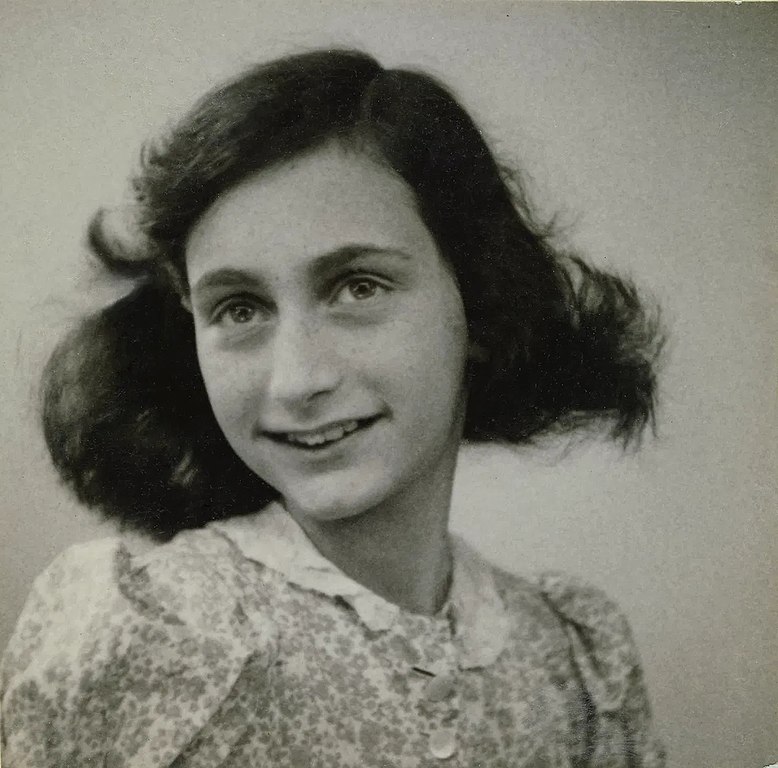
Anne Frank House, Amsterdam.
Public Domain via Wikipedia Commons
After receiving word that they would be deported to a Nazi work camp, Ann Frank and her family take refuge in a secret annex of an Amsterdam warehouse. Her family was from Germany and fled in 1933 to Holland to escape Nazi persecution. The Netherlands declared its neutrality but that did not stop the Germans from invading on 10 May 1940. After the bombing of Rotterdam, its military forces surrendered, and its government and royal family fled to London. Germany would occupy the country until the German surrender in May 1945.
The initial phase of the occupation was mild and often called the “velvet glove” where Germans under Arthur Seyss-Inquart did not impose the harsher rules of occupation found in other countries. The economy was doing well, and repression of the Jewish population was light. Starting in June 1941, that changed as Germany started demanding more from the occupied territories which lowered the standard of living. Repression of Jews began now in earnest as many were now deported to extermination camps.
Otto Frank had come to Amsterdam from Germany in 1933 with his wife Edith and their two daughters Margot and Anne. He worked for Opetka, which sold pectin and spices for jam production. A second company he started, Pectacon, sold wholesale spices, pickling salts, and herbs for sausage production. As things got more tense with Germany, he tried, unsuccessfully to move his business to Britain. When the occupation came and German laws about making businesses Aryan, he transferred ownership to his employees to keep it out of German hands. He unsuccessfully sought to emigrate to the United States.
Otto approached his bookkeeper, Miep Gies, to see if she could help hide his family. He also asked other employees to assist as well in bringing food to them in the secret annex hidden behind on a movable bookshelf. Another family, Van Pels would join them later as would Fritz Pfeffer making 8 people in total hiding in the Secret Annex.
For the next two years Ann would record in her diary her thoughts, humor, insight, and what was going on inside the annex. There were a lot of disagreements between the various people living together and Anne records how her father acted as a peacemaker. For two years they kept quiet during the day as people worked below and Nazi patrols were out on the streets. It all came to an end on 4 August 1944 when Dutch police officers with a member of the SS in charge raided the Secret Annex and arrested them all. Two employees were also arrested. They were all sent to Auschwitz, including the two men who had helped them. When Otto got off the train in Auschwitz, it was the last time he saw his wife and children. He would learn after the war his wife died in Auschwitz. Both Margo and Ann were moved to the Bergen-Belson concentration camp in Germany, where they both perished of typhus.
Otto would be the only one to survive and returning to Amsterdam he was given Anne’s diary by Miep Gies. After reading it, he was advised by others who had read it to have it published. It took a while, but it was first published in 1947 and into English in 1952. It has since then been translated into 70 languages and became a best seller and acclaimed movie. The diary stands as a testament to the six million Jews whose lives were taken by the Holocaust.
Sources
Anne Frank. (2024, February 27). Anne Frank Website. https://www.annefrank.org/en/anne-frank/
Andrews, E., & Andrews, E. (2023a, August 3). Who betrayed Anne Frank? HISTORY. https://www.history.com/news/who-betrayed-anne-frank
Sullivan, M. (2024d, July 1). Anne Frank’s family takes refuge. HISTORY. https://www.history.com/this-day-in-history/frank-family-takes-refuge
Suggested Reading
Frank, A. (1993). The Diary of Anne Frank (B. M. Mooyart, Trans.). Bantam.
Gies, M., & Gold, A. L. (2009). Anne Frank Remembered: The Story of the Woman Who Helped to Hide the Frank Family. Simon & Schuster.
Sullivan, R. (2022). The Betrayal of Anne Frank: A Cold Case Investigation. Harper.
Titanic News Channel is a participant in the Amazon Services LLC Associates Program, an affiliate advertising program designed to provide a means for sites to earn advertising fees by advertising and linking to Amazon.com.

